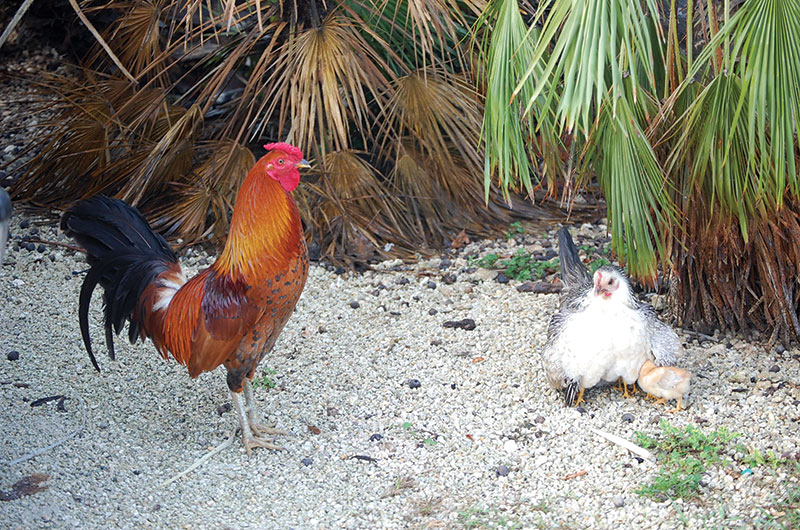New York State Bill to Ban Chick-Hatching Projects: PLEASE SUPPORT & Learn Why!
New York State residents are urged to help ban classroom chick-hatching projects in the state. Learn about Assembly Bill No. A06905, including contact information for all NYS Assembly members: Assembly Bill No. A06905.
Please express your support to the bill’s sponsor, Assembly Member Linda Rosenthal, here:
• Linda B. Rosenthal -- District 67
230 West 72nd Street
Suite 2F
New York, NY 10023
212-873-6368
LOB 627
Albany, NY 12248
518-455-5802M
RosentL@nyassembly.gov
Also, please urge your own NYS District Assembly Member to support Assembly Bill A06905. This bill has the potential to stop the use of thousands of chicks throughout New York State and could set a precedent for other states as well. Thank you for taking action!
Background on Classroom Chick-Hatching Projects
By Karen Davis, PhD, President of United Poultry Concerns

Photo of chicken family in the Florida Everglades by Davida G. Breier
Many people fail to perceive chickens as having and needing their parents. In the tropical forests where chickens evolved and continue to raise their families, hens and roosters are actively involved with their chicks from the moment they search together for a desirable nesting spot. They engage totally with their family and flock. Their life is vibrant and vigilant, not sterile and barren.
The school hatching programs that began in the 1950s mislead children (and some teachers) to think that chickens come from mechanical incubators. Supplemental facts about the role of the rooster and the hen, even if provided, cannot compete with the barren mechanized classroom experience. Each year, kindergarten and elementary schools place thousands of fertilized eggs in classroom incubators to be hatched within three or four weeks. They’re encouraged to do this by the school district’s science coordinators and the biological supply companies, which advertise fertile eggs and “easy-to-use” incubators in their catalogs.
Hatching-project birds are deprived of a mother hen. This is a big reason why many classroom chicks are sickly, dehydrated and crippled at birth. Chick organs often stick to the sides of the shell as a result of not being properly turned in the mechanical incubators. By contrast, a mother hen turns each of her eggs, individually, as often as 30 times a day, using her body, her feet and her beak to move each egg precisely to maintain proper temperature, moisture, ventilation, humidity and positioning of each embryo she is sitting on. The embryos signal their needs and she responds with the necessary adjustment of her eggs. Mechanical incubators do not match the care and precision of the mother hen.
When the hatching project is over, the survivors must be disposed of. Since most children bond with young animals (a bond these projects cynically exploit), students are told, and some teachers want to believe, that the chicks are going to live “happily on a farm.” In reality, most chicks are going to be destroyed by cervical dislocation, grinding machines, suffocation or electric shock. Commercial farms do not assimilate school-hatching project birds into their flocks for fear of importing diseases picked up in the classrooms.
In other instances, classroom chicks are sold to live poultry markets, fed to captive zoo animals or left to die of hunger and thirst as a result of ignorance and neglect. Some end up in animal shelters where they are either destroyed or, in rare cases, adopted out. All of us who run sanctuaries are familiar with this never-ending situation.
Hatching projects encourage children to view baby animals as disposable objects and cute little toys instead of fellow creatures requiring a lifetime of care and commitment. They encourage children to want to bring more baby animals into the world, like litters of puppies and kittens that no one wants after the “miracle of birth” has worn off. They place a burden on overwhelmed animal shelters and busy parents who can’t keep the birds, especially when they turn out to be roosters.
And while children should be learning the responsibility of veterinary care for animals who depend on them, most schools do not provide veterinary care for birds who are born sick and deformed in these projects. Reports of schools flushing sick birds down the toilet and tossing them into Dumpsters are among the many stories that have come our way, including a classroom quail-hatching program in New Jersey created to provide quails for canned quail “hunts.”
So while these projects may appear “innocent,” they are not. School hatching chicks and fertile eggs come from factory-farm hatcheries. They are part of the industrialized poultry industry developed and promoted by federal, state and county agricultural extensions in the 1940s and 1950s to indoctrinate children, teachers and school administrators to view and treat chickens, ducks, and other domestic fowl as mass-production objects suited to machines and a barren existence.
For these reasons, teachers are urged to replace chick-hatching projects with programs and activities that teach life cycles and inspire students to appreciate, respect, and learn about the amazing life of birds on our planet and in their own neighborhoods. There is an ever-growing wealth of video and sanctuary education on the Internet and a growing network of farmed animal sanctuaries for student field trips.
Learn more here:
• The Dignity, Beauty, and Abuse of Chickens: As Symbols and in Reality
• Hatching Good Lessons: Alternatives To School Hatching Projects
• International Respect for Chickens Day
Thank you for caring, sharing, and taking action!
– United Poultry Concerns
